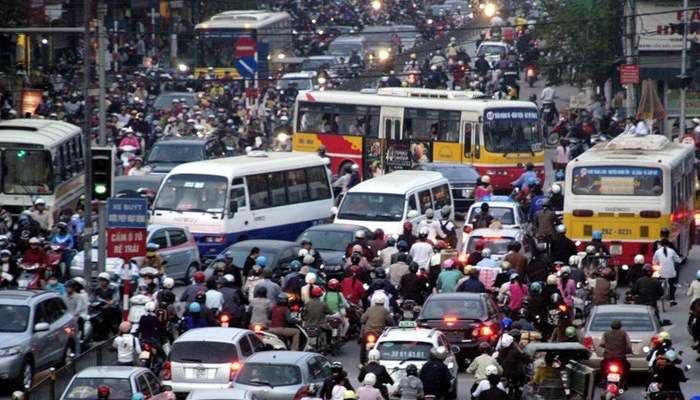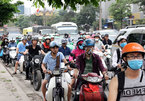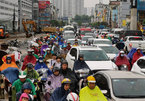The capital city is drawing up a plan to implement the resolution on strengthening road transport vehicle management in order to ease traffic congestion and pollution in 2017-2020.

Few people have expressed support for the idea, while there are numerous city dwellers showing opposition to the plan.
Economists warned that the fee collection will make goods carried to the inner city more expensive.
Meanwhile, residents in Hanoi fear they will have to pay more for goods and services, while they are not sure if this really can help ease the traffic congestion.
| Few people have expressed support for the idea, while there are numerous city dwellers showing opposition to the plan. |
They wonder how and where the fees would be collected.
“Will there be one fee collection station on every road? If the answer is ‘yes’, this will not be okay, because Hanoi will be jammed by the fee collection stations,” Vu Le Ha An, who lives in Dong Da district, commented on her Facebook.
Nguyen Huu Duc, a senior expert from JICA, also thinks that collecting fees won’t be easy.
None of the current laws allows municipal authorities to charge fees on vehicles entering the inner city. It will be necessary to amend the laws to make the plan legal.
After that, Hanoi will have to identify congestion points to collect fees. However, traffic jams don't occur all day, but at certain moments. There are many roads that link to inner city.
Duc went said state management agencies are to be blamed on this. In Hanoi, there are small road sections on which tens of apartment buildings arise.
Khuong Kim Tao, former deputy chief of the National Traffic Safety Committee also thinks this is unfeasible, which may even make the capital city’s traffic become more chaotic.
If Hanoi applies the non-stop fee collection method, a problem will arise for vehicles from other provinces/cities, as the vehicles only enter the city occasionally.
Tao commented that the solution won’t help ease congestion. People will still have to go into inner city to reach their offices. If they don’t use private cars, they will take taxis or drive motorbikes.
He pointed out that traffic jams occur in all areas of the city, not only in central districts. Therefore, charging fees on vehicles which enter some areas in the inner city would be unfair, because only those who work in inner city areas will have to pay fees.
Linh Ha

Hanoi takes action to reduce traffic jams
Hanoi had announced plans to reduce traffic jams in 33 hot spots, said Vu Van Vien, director of the municipal Department of Transport.

Hanoi to build digital traffic map for drivers as congestion worsens
Hanoi is planning to build a real-time digital traffic map system similar to Google Maps within the year, according to the city’s transport department.
 Hanoians think the authorities’ plan to charge entrance fees on vehicles entering the inner city is a bad idea.
Hanoians think the authorities’ plan to charge entrance fees on vehicles entering the inner city is a bad idea.